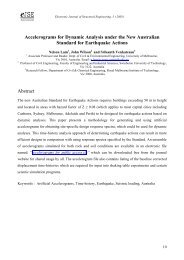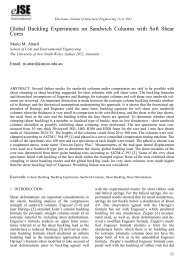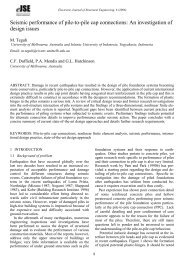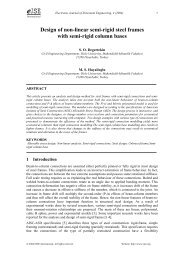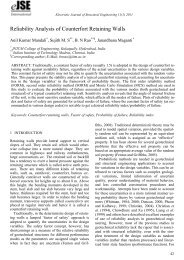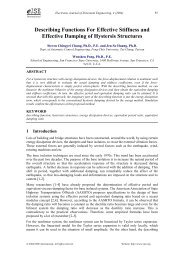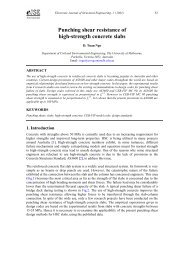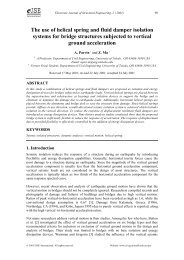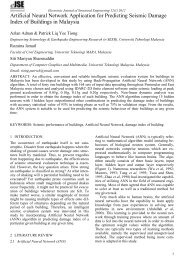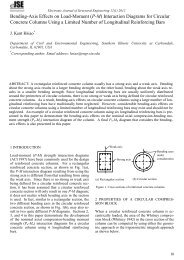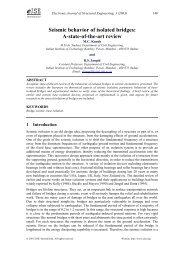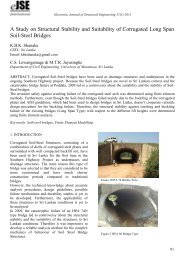You also want an ePaper? Increase the reach of your titles
YUMPU automatically turns print PDFs into web optimized ePapers that Google loves.
For this model, all mass is input at the joints. Table B-1 defines the joint masses used in the<br />
model. The bottom portion of the table defines the masses, the top portion of the table defines<br />
which joints are referred to as the center, corner and edge joints. Note that no mass is assigned<br />
to joints 22 and 26 at the roof level. These are the joints at the top of the chevron braces.<br />
Joint Labels at Center, Edge and Corner Joints<br />
Level Center Joint Edge Joints Corner Joints<br />
Roof 24 20, 23, 25, 28 19, 21, 27, 29<br />
Second 14 11, 13, 15, 17 10, 12, 16, 18<br />
Joint Masses at Center, Edge and Corner Joints (k-sec 2 / ft)<br />
Level Center Joint Edge Joints Corner Joints<br />
Roof 0.72 0.48 0.30<br />
Second 1.45 0.90 0.55<br />
Table B-1: Joint Masses Used In Computer Model<br />
The lateral earthquake loads are assumed to be 17 kips (0.0074ksf) at the roof level and 16 kips<br />
at the second level for the X-direction (moment frame direction), and 26 kips (0.0113 ksf) at the<br />
roof level and 23 kips at the second level for the Y-direction (braced frame direction). These<br />
forces are assigned as shell static uniform loads at the roof level and as joint loads at the second<br />
level. The second level forces are broken down into joint loads as shown in Table B-2.<br />
Joint Loads at Center, Edge and Corner Joints (k) For Second Level<br />
Earthquake<br />
Direction<br />
Center Joint<br />
14<br />
Edge Joints<br />
11, 13, 15, 17<br />
Corner Joints<br />
10, 12, 16, 18<br />
EQX 2.67 2.00 1.33<br />
EQY 3.83 2.88 1.92<br />
Table B-2: Joint Forces Used In Computer Model For Static Earthquake Loading At Second<br />
Floor Level In X and Y Direction<br />
<strong>SAP2000</strong> <strong>Web</strong> <strong>Tutorial</strong> 1 7



